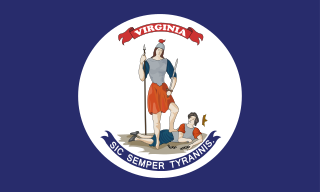
James Dearing was a Confederate States Army officer during the American Civil War who served in the artillery and cavalry. Dearing entered West Point in 1858 and resigned on April 22, 1861, when Virginia seceded from the Union. Dearing was mortally wounded at the Battle of High Bridge during the Appomattox Campaign of 1865, making him one of the last officers to die in the war. Despite serving as a commander of a cavalry brigade and using the grade of brigadier general after he was nominated to that grade by Confederate President Jefferson Davis, Dearing did not officially achieve the grade of brigadier general because the Confederate Senate did not approve his nomination. His actual permanent grade was colonel.

During the American Civil War, the State of Vermont gave strong support to the Union war effort, raising troops and money. According to Rachel Cree Sherman:
By the spring of 1865 Vermont was devastated, having sent one tenth of its entire population to war, with a loss of over 5,000 lives to battle, wounds, and disease. The state had dedicated nearly $10 million to support the conflict, half of that amount offered up by towns with no expectation of recompense.
Battery B, 1st West Virginia Light Artillery Regiment was an artillery battery that served in the Union Army during the American Civil War.
The Battery C, 1st West Virginia Light Artillery Regiment was an artillery battery that served in the Union Army during the American Civil War.
Battery D, 1st West Virginia Light Artillery Regiment was an artillery battery that served in the Union Army during the American Civil War.
The Battery E, 1st West Virginia Light Artillery Regiment was an artillery battery that served in the Union Army during the American Civil War.
The Battery F, 1st West Virginia Light Artillery Regiment was an artillery battery that served in the Union Army during the American Civil War.
The Battery H, 1st West Virginia Light Artillery Regiment was an artillery battery that served in the Union Army during the American Civil War.

The 1st Regiment Wisconsin Heavy Artillery was an artillery regiment that served in the Union Army during the American Civil War.

The 3rd Pennsylvania Heavy Artillery was a heavy artillery regiment that fought in the Union Army during the American Civil War.

The 4th Independent Battery Wisconsin Light Artillery was an artillery battery that served in the Union Army during the American Civil War.

For this article, “Company A” and “Battery A” are interchangeable. A battery of four to six cannons, with two to three two-cannon sections was the basic unit of the artillery branch. The organization was commanded by a captain with first and second lieutenants as section chiefs and chief of caissons. A battery organization was roughly company strength, as it related to the infantry branch. As such, the formal designation of an artillery battery by the U.S. Army was “company.”

The 1st Virginia Infantry Regiment was an infantry regiment raised in the Commonwealth of Virginia for service in the Confederate States Army during the American Civil War. It fought mostly with the Army of Northern Virginia.

Battery L, 1st Ohio Light Artillery was an artillery battery that served in the Union Army during the American Civil War.
The 116th Ohio Infantry Regiment, sometimes 116th Ohio Volunteer Infantry was an infantry regiment in the Union Army during the American Civil War.

Battery B, 1st Rhode Island Light Artillery Regiment was an artillery battery that served in the Union Army during the American Civil War.
Battery F, 1st Rhode Island Light Artillery Regiment was an artillery battery that served in the Union Army during the American Civil War. The battery briefly served as cavalry, March 20 to May 18, 1862.

The 2nd New York Heavy Artillery Regiment was a heavy artillery regiment that served in the Union Army during the American Civil War. During the Siege of Petersburg the regiment operated as infantry.
Battery D, 1st Pennsylvania Light Artillery was a light artillery battery that served in the Union Army as part of the Pennsylvania Reserves infantry division during the American Civil War.

Battery E, 1st U.S. Artillery was a United States Army field artillery battery that was in service between 1821 and 1901, most notably in extensive service with the Union Army during the American Civil War.









